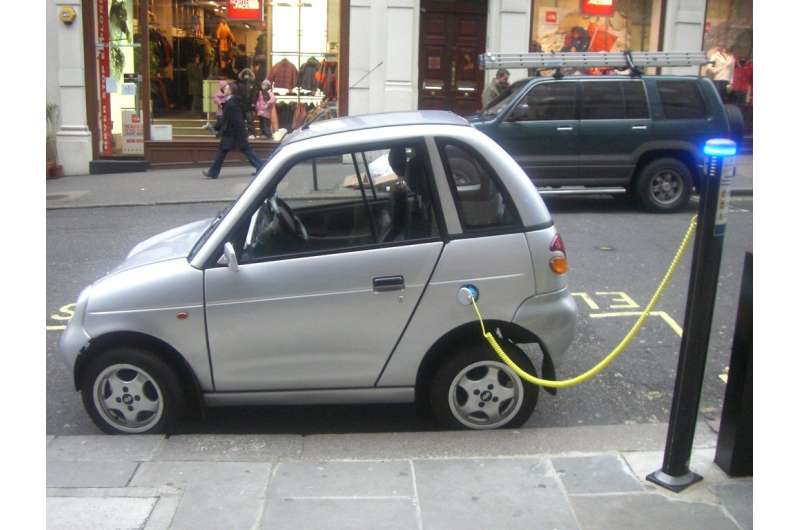Beyond lithium: A systematic search for candidate materials for calcium-ion batteries

Electric cars are the future; they will help reduce air pollution and end our dependence on fossil fuels. However, there is one glaring problem with this potentially disruptive technology: the availability of sufficient lithium (Li) to produce all these car batteries. The best rechargeable batteries we currently have are based on chemical reactions involving Li, which is why one finds Li-ion batteries in most portable electronic gadgets. Unfortunately, Li is not abundant on earth, and its reserves represent as little as 0.002% of the earth's crust. Once electric cars become more widespread, the demand for Li will start exceeding the supply.
A possible way out of this conundrum is to design new types of batteries that rely on more abundant alkaline metals instead of Li. Out of several candidates that could replace Li, calcium (Ca) stands out as a promising metal for rechargeable batteries. Not only is Ca 10,000 times more abundant than Li, but it can also yield a similar battery performance in theory. However, there still remains some major hurdles to the development of Ca-based batteries, one of them being a lack of knowledge on suitable cathode (negative terminal) materials that can efficiently store and release Ca in a reversible manner.
In an effort to help identify the best candidate cathode materials for Ca-batteries, Assistant Professor Haesun Park of Chung-Ang University, Korea, and his colleagues adopted a systematic approach. By running high-throughput quantum mechanical simulations based on density functional theory (DFT), the team predicted battery-relevant properties of various layered materials combining Ca and transition metal oxides.
Most of this work was conducted at Argonne National Lab and in a Joint Center for Energy Storage Research (JCESR) project supported by the US Department of Energy. "Research on calcium batteries constitutes one of JCESR's major ongoing efforts," remarks Prof. Park. "The stable support from Argonne and the JCESR project allowed us to tackle the challenges in Ca-ion batteries, and their inclusive environments set the stage for synergetic collaborations." The associated paper was made available online on November 6, 2021, and was published in Volume 11, Issue 48 of Advanced Energy Materials on December 23, 2021.
The scientists considered seven transition metal ions and four types of layered structures for a total of 28 candidate cathodes. Through DFT calculations, they assessed many important characteristics, including their thermodynamic stability, energy density, synthesizability, Ca mobility, and electronic structure. In turn, this allowed them to pinpoint promising materials for developing Ca-based batteries.
In particular, the scientists identified cobalt (Co) as a well-rounded transition metal for a layered Ca-based cathode with the formula CaCo2O4. Moreover, they also showed that combining different transition metals in the cathode can be a viable strategy to improve upon certain desired characteristics. "We managed to show that layered transition metal oxides, which are widely used in lithium, sodium, and potassium batteries, can be a promising class of materials for Ca cathodes," highlights Prof. Park. "The promising candidate structures and chemical compositions we found will hopefully encourage further experiments on these materials."
The successful development of low-cost and high-performance Ca-ion batteries will certainly help in the necessary transition away from traditional cars and towards electric vehicles, which will be more environmentally friendly in many regards. Let us hope experimental works cement the findings of this study and pave the way to a greener future.
More information: Haesun Park et al, Layered Transition Metal Oxides as Ca Intercalation Cathodes: A Systematic First‐Principles Evaluation, Advanced Energy Materials (2021). DOI: 10.1002/aenm.202101698


















